Ambiences and Tendencies
 |
 |
 |
 |
 |
 |
 |
Rock ‘n Roll: Satanic Music - II
The Evolution of Rock ‘n Roll
to Hard & Acid Rock
As pointed out in our Introduction, soft rock quickly became hard rock, whose principal protagonists were Jerry Lee Lewis, Stevie Nicks and Alice Cooper. (1) The characteristics of this second wave are an acceleration of rhythm (beat), an increase in sound volume and the frenetic unleashing of percussion.
Regarding this rhythm, careful research was done on African tribes and their voodoo rituals (2) as practiced in South America and Haiti. A complete repertoire of all the sexual rites, incantations and spells was assembled in order to replicate as closely as possible the successive rhythms that induce listeners to a full sexual pleasure.
The insistent beat stimulates all the emotional, physical and psychological powers in a way that wears out the nervous system of listeners, and even paralyzes the mental process of the conscious.
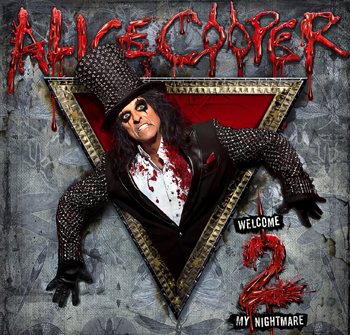 Sound intensity rises 20 decibels (3) above the tolerance level of human hearing; it is a deliberate and direct assault on the person through the direct pathway of the auditory nerves.
Sound intensity rises 20 decibels (3) above the tolerance level of human hearing; it is a deliberate and direct assault on the person through the direct pathway of the auditory nerves.
What triggered this turning point in the evolution of rock 'n roll?
We will mention only three main sources:
Acid rock (5)
The revolution was still in its early stages. The arrival on the scene of the Beatles, the Rolling Stones and The Who (6) added a new element to the hellish current.
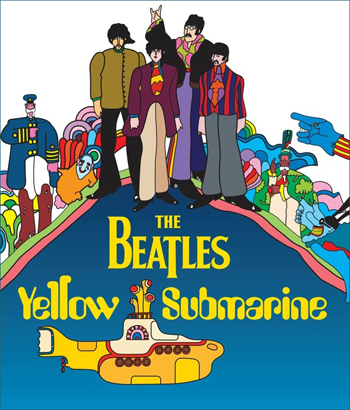 Youth had already been initiated into the use of hallucinogenic drugs (7) since American psychologist and writer Timothy Leary began a campaign in the 1960s to introduce intellectuals and artists to LSD.
Youth had already been initiated into the use of hallucinogenic drugs (7) since American psychologist and writer Timothy Leary began a campaign in the 1960s to introduce intellectuals and artists to LSD.
Inevitably rock music would integrate the full panoply of hallucinogenic drugs to enhance the strong emotions induced in listeners of the new wave of rock, that is, acid rock.
The Beatles with their Yellow Submarine (psychedelic hallucinogen or LSD), (8) the Rolling Stones with Brown Sugar (cocaine) and Sister Morphine (an opiate) and, finally, David Soul's Silver Lady (the loaded needle for mainlining drugs) all contributed to this new phase.
Abby Hoffman, author of Revolution for the Hell of It!, said it plainly: "Rock is the source of the revolution. Our lifestyle with drugs, freaky clothes, and rock music with its power, that's the revolution!"
Satanic rock 'n roll
One might think that the final boundaries had been reached, but this would be to underestimate the resources of the diabolical genius of the revolutionaries in question. It aimed for the ultimate limit, the occult, (9) which leads to the worship of Satan.
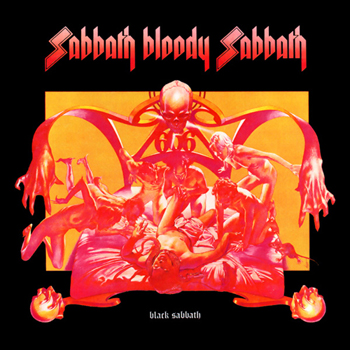 This phase was opened by the Beatles in 1968 with the appearance of the White Album, containing its multiple tape loops in Revolution and back-masking messages in Revolution 9. For the first time in the recording industry, subliminal messages (10) were introduced to transmit the "gospel of Satan." The formula was successful (Charles Manson received his murderous orders from the album), and thereafter rock music walked on this broad path of diabolical perversion.
This phase was opened by the Beatles in 1968 with the appearance of the White Album, containing its multiple tape loops in Revolution and back-masking messages in Revolution 9. For the first time in the recording industry, subliminal messages (10) were introduced to transmit the "gospel of Satan." The formula was successful (Charles Manson received his murderous orders from the album), and thereafter rock music walked on this broad path of diabolical perversion.
Among the masters of the genre, we must mention the Rolling Stones, whose satanic archpriest is Mick Jagger (11), followed closely by The Who, Black Sabbath, Led Zeppelin and Styx (12). There is no longer any equivocation. Everything is inspired and leading to the glorification of the occult powers and the worship of his majesty Satan.
In this phase, we find no more sexual prohibitions, no more repression of the instincts, no more social veneers that prevented young people from freely and wildly expressing their sexuality.
Punk rock (13)
Was this the end? No, not yet, for the rock perversion had not yet touched the abyss. The ‘80s saw the birth of rock groups whose aim and philosophy were to lead its adepts directly to suicide, mass violence and systematic crime.
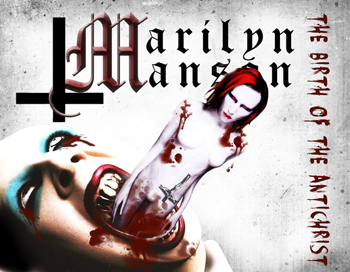 Among the most notorious groups, we mentioned Kiss (14), Ted Nugent and mutants like psychedelic/progressive rock group Aphrodite's Child with its Album 666.
Among the most notorious groups, we mentioned Kiss (14), Ted Nugent and mutants like psychedelic/progressive rock group Aphrodite's Child with its Album 666.
The height of the punk rock musical experience is to bloody a partner by means of razor blades sewn into one's jeans and shirt or to beat fellow rockers and wound them with nail-studded bracelets and punches. In 1999, two main groups stood out, Rob Zombie, whose teacher was Alice Cooper and, above all, Marilyn Manson.
This is what rock 'n roll had come to by the year 1999. In the next article we will look at the unmasking of the subversive nature of rock.
Continued
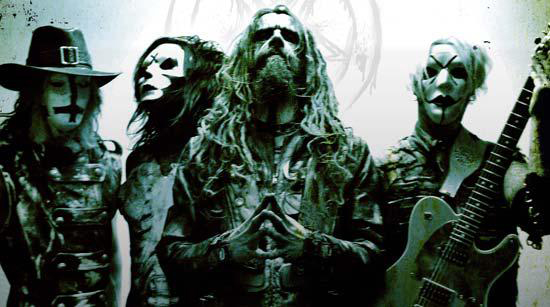
Fr. Jean-Paul Regimbal (1931-1986), who relentlessly preached against Masonry
and rock music, was a Trinitarian priest in Northbay, Ontario, Canada.

Regarding this rhythm, careful research was done on African tribes and their voodoo rituals (2) as practiced in South America and Haiti. A complete repertoire of all the sexual rites, incantations and spells was assembled in order to replicate as closely as possible the successive rhythms that induce listeners to a full sexual pleasure.
The insistent beat stimulates all the emotional, physical and psychological powers in a way that wears out the nervous system of listeners, and even paralyzes the mental process of the conscious.

The macabre and demonic music of Alice Cooper
What triggered this turning point in the evolution of rock 'n roll?
We will mention only three main sources:
- The various techniques of subliminal messages;
- The consecration of the rock performers to Satan;
- The benefactors who provided the funds with the aim of achieving world dominion namely, the Illuminati and Freemasonry, WICCA and other satanic organizations like the Welsh Witchcraft Society.
Acid rock (5)
The revolution was still in its early stages. The arrival on the scene of the Beatles, the Rolling Stones and The Who (6) added a new element to the hellish current.

A psychodelic tour on the Yellow Submarine album
Inevitably rock music would integrate the full panoply of hallucinogenic drugs to enhance the strong emotions induced in listeners of the new wave of rock, that is, acid rock.
The Beatles with their Yellow Submarine (psychedelic hallucinogen or LSD), (8) the Rolling Stones with Brown Sugar (cocaine) and Sister Morphine (an opiate) and, finally, David Soul's Silver Lady (the loaded needle for mainlining drugs) all contributed to this new phase.
Abby Hoffman, author of Revolution for the Hell of It!, said it plainly: "Rock is the source of the revolution. Our lifestyle with drugs, freaky clothes, and rock music with its power, that's the revolution!"
Satanic rock 'n roll
One might think that the final boundaries had been reached, but this would be to underestimate the resources of the diabolical genius of the revolutionaries in question. It aimed for the ultimate limit, the occult, (9) which leads to the worship of Satan.

No more hiding - open worship of Satan
Among the masters of the genre, we must mention the Rolling Stones, whose satanic archpriest is Mick Jagger (11), followed closely by The Who, Black Sabbath, Led Zeppelin and Styx (12). There is no longer any equivocation. Everything is inspired and leading to the glorification of the occult powers and the worship of his majesty Satan.
In this phase, we find no more sexual prohibitions, no more repression of the instincts, no more social veneers that prevented young people from freely and wildly expressing their sexuality.
Punk rock (13)
Was this the end? No, not yet, for the rock perversion had not yet touched the abyss. The ‘80s saw the birth of rock groups whose aim and philosophy were to lead its adepts directly to suicide, mass violence and systematic crime.

Punk rock reaches new extremes of sadistic Satanism
The height of the punk rock musical experience is to bloody a partner by means of razor blades sewn into one's jeans and shirt or to beat fellow rockers and wound them with nail-studded bracelets and punches. In 1999, two main groups stood out, Rob Zombie, whose teacher was Alice Cooper and, above all, Marilyn Manson.
This is what rock 'n roll had come to by the year 1999. In the next article we will look at the unmasking of the subversive nature of rock.
Continued

Rob Zombie punk group - Satanic symbols and songs dedicated to Satan
- See Appendix A
- Voodoo: Cult of animistic origin that combines some elements of Roman Catholic ritual with pagan African magical and religious rites, characterized by sorcery and spirit possession. It is practiced among blacks in the Caribbean, Latin America and Africa.
- Decibel: a unit (dB) used to measure sound level. The human voice has a mean intensity (moderate conversation) of 55 decibels, and thunder 70 dBs.
- See Appendix A
- Acid: a type of rock music, mainly of the late 1960s, inspired by the use of hallucinogenic drugs.
- See Appendix A
- Hallucinogenic drugs: drugs that cause hallucinations, that is, profound distortions in a person's perceptions of reality. Under the influence of hallucinogens, people see images, hear sounds and feel sensations that seem real but do not exist. The drug terminology is to be "spaced out." Common acid drugs of this rock period were LSD, peyote, psilocybin, amphetamines, barbiturates, narcotics, etc.
- Psychedelic: in psychiatry, a substance such as LSD used in therapy that causes visual, sensory or olfactory hallucinations in a state of wakened sleep. Such drugs also cause the reactions and behavior inspired by that distortion of reality, such as believing oneself to be a bird or Superman, with the conviction of being able to fly or stop a train with one's own physical strength.
- Occult: an esoteric science whose origins date back to ancient paganism (Egypt and Mesopotamia), which uses the hidden powers of darkness and devils through astrology, magic and satanic worship, with aims of achieving more than natural human powers.
- Subliminal: a message that comes to a person operating below the threshold of consciousness, that is, a message picked up on by your subconscious. This message thus escapes the examination of the conscious mind and works its way slowly into the brain.
- The Rolling Stones' song Sympathy for the Devil is the official anthem for the Church of Satan. In it, Lucifer speaks in the first person and asks sympathy for all who meet him. Lead singer, Mick Jagger claims that Anton LaVey, the founder of the Church of Satan and author of the Satanic Bible, help inspire their music.
- See Appendix A
- Originally in England this word meant "prostitute, harlot, strumpet," of unknown origin. According to another US source it means 'the lowest.'
- See Appendix A
and rock music, was a Trinitarian priest in Northbay, Ontario, Canada.

Posted September 23, 2015
______________________
______________________








